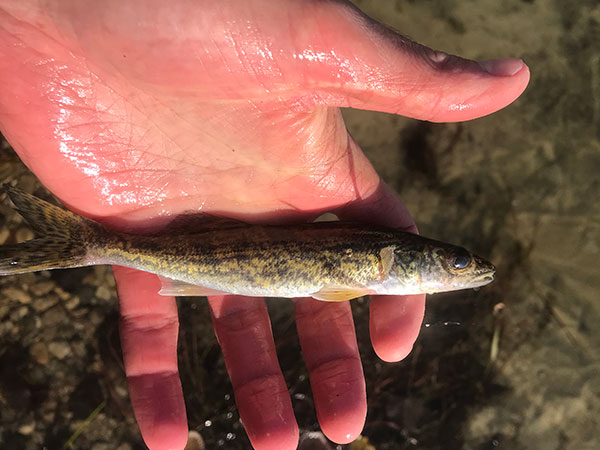By Louie Stout
 Walleye fingerling
Walleye fingerling
If things go as planned, northern Indiana will offer much better walleye fishing in the coming years.
We can say that because of positive changes the Indiana DNR is making in its hatchery program and philosophy for raising and stocking walleyes.
Prior to this year, the state mostly stocked smaller, 2-inch fish with hopes that several would survive and grow into a contributing fishery. Those fish were the offspring of adult walleyes captured in nets at Brookville Reservoir in southern Indiana.
Some lakes were being supplemented with larger, commercial hatchery fish and those waters had a higher success rate. The DNR annually purchases about 35,000 larger ‘eyes from commercial hatcheries.
As no surprise to the DNR or anglers, those two-inchers were feeding a lot of predators that existed in the lakes where they were stocked. Survival was limited.
That’s about to change because Northeast Public Land Supervisor Bob Bell and his staff wanted to make changes to increase the number of 6-inch walleyes being stocked. Some hatchery production schedules were altered and responsibilities moved around.
“We couldn’t buy a hatchery, nor could we make one so we’re piecing together a program,” he said.
This year, those smaller walleyes spent more time in ponds at Fawn River Hatchery in Orland, Ind. where they grew to larger sizes and were stocked in Pine and Stone lakes in LaPorte, Ind. and Bass Lake near Knox, Ind.
Prior to this year, those ponds raised panfish and catfish. Beginning earlier this year, they were devoted to walleyes.
This year – the first for the project – produced a little over 20,000 6 to 7 inchers. Bell’s crew learned a lot and hopes to do even better in the future.
“Our goal is to produce 30,000 at Fawn River,” said Bell. “We’re not sure what the hatchery is capable of producing, but that’s the goal.”
Bell said that once they get Fawn River to 30,000, that number - plus the 35,000 commercial fish the state purchases - gets northern Indiana closer to what he believes it needs.
“If we can eventually get to 80,000 of the larger stocked fish, then you’re going to see pretty darn good walleye fishing in northern Indiana,” he added.
Pond raising walleyes is a delicate task. Once the tiny fish are moved from inside the hatchery to the ponds, they must be able to eat well, feeding on plankton initially.
After they gain size, “they need meat so we switch them to minnows,” said Bell. “It’s a timing thing and requires thousands of pounds of minnows which is why we’re experimenting with raising our own forage.”
Bell is an optimist. Barring any unknown problems or bugs in the system that may arise, northern Indiana walleye fishing should get a whole lot better.